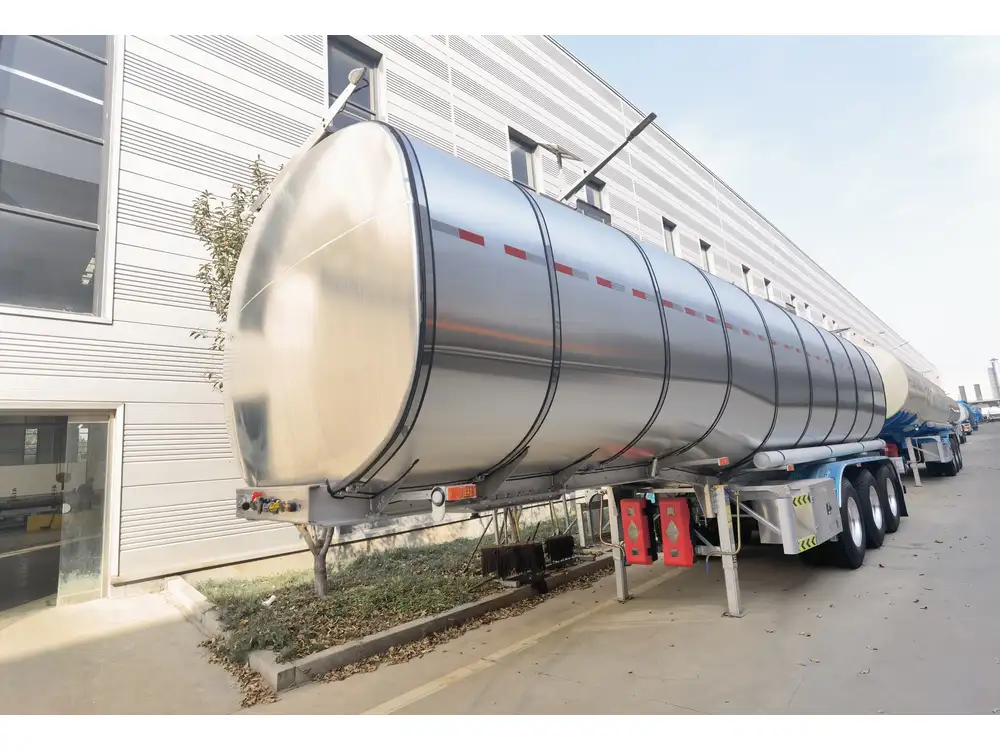The Democratic Republic of the Congo (DRC) is a nation rich in natural resources, with a burgeoning industrial sector that demands efficient transport solutions. One critical asset in facilitating trade and resource management is the oil tanker. At CarMax Vehicle, we offer state-of-the-art oil tankers designed to meet the unique demands of the Congolese market. In this article, we explore the nuances associated with acquiring a new oil tanker for sale in Congo, diving into specifications, benefits, financing options, maintenance considerations, and more.
Understanding the Market for Oil Tankers in Congo
Economic Context
Congo’s oil production has substantial potential, contributing significantly to the nation’s GDP. As oil exploration and extraction activities grow, so does the need for robust logistics and transportation solutions.
| Factor | Impact on Oil Tanker Needs |
|---|---|
| Oil Production Rate | Higher production requires more efficient transport logistics |
| Infrastructure | Limited but improving infrastructure necessitates reliable tankers |
| Export Opportunities | Growing international interest increases transport needs |

Characteristics of Oil Tankers
When assessing a new oil tanker for sale in Congo, it is crucial to understand the specifications that make for a suitable vessel:
- Capacity: Typically measured in deadweight tonnage (DWT), a range of capacities should be considered depending on the export needs, from smaller tankers for local transport to large vessels for international trade.
- Material Construction: Modern tankers designed for durability often utilize high-strength steel along with corrosion-resistant coatings to ensure longevity and safety.
- Engine Type: Consideration of engine efficiency and emissions compliance is important, with a shift towards more environmentally friendly options being a significant trend.
- Safety Features: Necessary safety protocols such as double hull designs, advanced navigation systems, and onboard emergency equipment enhance safety.
The Benefits of Choosing New Oil Tankers
Investing in a new oil tanker offers several advantages:
- Latest Technology: Unlike second-hand vessels, modern tankers integrate the latest technology to optimize fuel efficiency and emissions reduction.
- Reduced Maintenance Costs: New oil tankers often come with warranties and reduced wear, leading to lower operational costs.
- Regulatory Compliance: New constructions are built to meet current regulations, reducing legal liabilities associated with older models.
- Customization Options: We offer customization to align with specific operational goals—whether in capacity, design, or specialized equipment.
Financing Options for Oil Tankers
Purchasing an oil tanker is no small investment, but various financing options are available to facilitate this acquisition:

Traditional Loans
- Bank Financing: Establishing good relationships with financial institutions may allow for favorable loan terms.
- Collateralized Loans: Using company assets can help secure favorable interest rates.
Leasing Options
- Operating Leases: This approach allows businesses to use a tanker without acquiring it outright, offering flexibility in upgrading as technologies progress.
- Finance Leases: This option involves a longer-term commitment but can lead to acquisition at the lease’s end.
Government Grants and Subsidies
- Local Government Support: Investigate availability of local funding aimed at boosting infrastructure and logistics capabilities within the country.

Equity Financing
- Partnerships: Collaborating with investors can alleviate financial burdens while enabling shared expertise and resources.
Essential Features to Consider
When selecting a new oil tanker for sale in Congo, contemplate the following features meticulously:
Size and Capacity
Understanding your operational logistics allows for strategic planning on capacity. This chart illustrates typical capacities against operational contexts:
| Tanker Type | Typical Capacity (DWT) | Best Use Case |
|---|---|---|
| Small Tanker | 5,000 – 10,000 | Local transport, quick delivery to markets |
| Medium Tanker | 25,000 – 50,000 | Regional exports, compliant with coastal zones |
| Large Tanker | 100,000+ | International shipping, high-volume exports |

Fuel Efficiency
Recent innovations emphasize fuel-efficient designs, aligning with global sustainability trends. It’s essential to consider fuel type and efficiency ratings that maximize operational margins.
Crew Accommodations
Comfort and safety of the crew onboard should also reflect in your choice of tanker. Proper living arrangements not only reduce turnover but also adhere to international maritime standards.
Maintenance and Operational Considerations
Maintaining an oil tanker demands a structured approach to avoid costly repairs:
- Regular Inspections: Schedule semi-annual inspections to identify wear and tear before they escalate.
- Crew Training: Regular training sessions on safety protocols and emergency responses safeguard both crew and cargo.
- Log Maintenance Records: Maintain detailed records of all inspections, repairs, and upgrades to ensure compliance and facilitate future sales.

Navigating Regulations and Compliance
Congo’s regulatory environment requires keen attention. Be familiar with:
- Local Maritime Laws: Compliance with DRC’s maritime transport regulations is non-negotiable.
- International Standards: As international trade increases, adherence to international maritime shipping standards (such as IMO regulations) will be necessary.
Conclusion: Elevate Your Oil Transport Solutions
Investing in a new oil tanker for sale in Congo represents a strategic move towards enhancing operational efficiency in the rapidly evolving oil sector. By aligning your purchase with your business needs and the peculiarities of the Congolese market, you will secure lasting benefits for your operations.
As you prepare to explore options, consider reaching out to professionals in the field, such as CarMax Vehicle, to not only identify the right tanker but also navigate the complexities associated with acquisition and operation.
FAQs
1. What is the average cost of a new oil tanker?
The cost can vary widely based on size, specifications, and customization, but new oil tankers typically range from several million to tens of millions of dollars.
2. How do I ensure compliance with maritime regulations in Congo?
Engage with local maritime authorities and professionals who can assist in navigating the regulatory landscape and ensuring all necessary documentation is in order.
3. What financing options are available for purchasing an oil tanker?
Options include traditional loans, leasing, government grants, and equity financing through partnerships.
4. How can I assess the right size of tanker for my needs?
Evaluate your volume of oil transport, market demand, and operational logistics; consider working with industry experts to fine-tune your choice.











Reviews
There are no reviews yet.